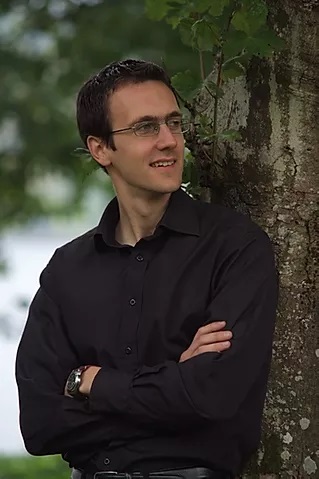
Sounds Romantic
Highland Chamber Orchestra’s September programme brings together music by three giants of the Romantic era. I’ve been aware of Mendelssohn’s connections to Scotland since childhood.
As a youngster, I remember looking at his beautiful landscape sketches in Mendelssohn in Scotland – a book which now sits on the shelves at our house in Strathspey. And I have fond memories of a teenage visit to Fingal’s Cave on Staffa, complete with the Hebrides Overture blaring out over the boat tannoy! So it’s a real thrill to be conducting the Third Symphony for the first time, a work inspired by and infused with the history, sights, and character of rugged Scotland. The Saint-Saëns and
Beethoven complete something of a dream programme for an orchestra. All three pieces are remarkable particularly for their instrumentation and use of orchestral colour, so this programme is a fantastic opportunity for listeners to really get inside
the HCO sound and hear what our players can do – not to mention our fabulous soloist!
Conceived on an evening visit to the ruins of Holyrood Chapel and subtitled “The Scottish”, Mendelssohn’s Symphony No.3 is Romantic in the truest sense. Suffused with not only the history and legends of Scotland as seen through Scott and Ossian, but also with Mendelssohn’s first-hand experiences of the Scottish landscape, it is by turns brooding, swirling, rousing, dark.
Like Mendelssohn, Saint-Saëns was a tunesmith of the highest order, many of whose works are among the most immediately recognisable of the Nineteenth Century. But the Violin Concerto No.3 is something of a piece apart, treating its themes in so surprising and mercurial a fashion, as to constantly surprise the listener. Far from being a mere virtuoso vehicle, it tames its large orchestra and soloist in often subtle ways, and is full of unusual sonorities and decorative impressionism – looking forward to the music of Debussy and Ravel.
And what of Beethoven, regarded by many as the first musical “Romantic”? While it resulted in some of his most involving and moving music, Beethoven’s single foray in the world of opera had its fair share of teething problems. It was to a French libretto that he turned – the story of the brave Leonore whose devotion to her jailed husband Florestan ultimately saves him from the brink of death. The overture compresses and illuminates the opera’s themes of love, redemption, and triumph in the most enthralling way, a fitting opener to our programme of Romantic masterpieces.
Robin Versteeg, HCO Conductor
